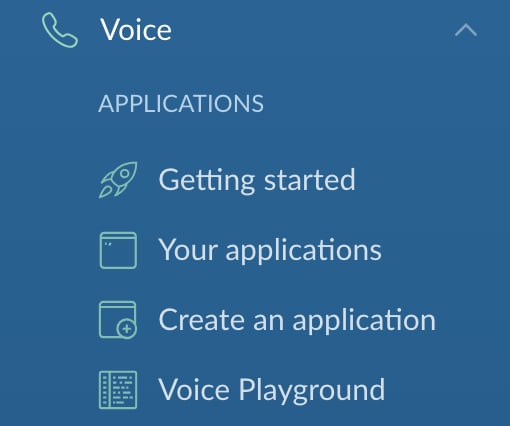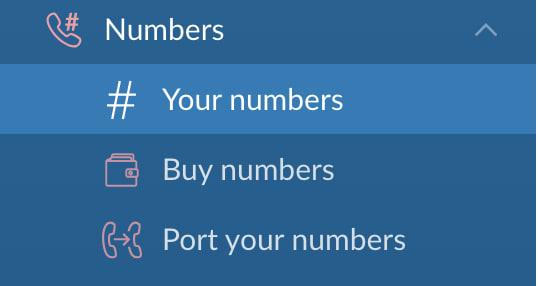We may conduct a lot of our daily lives with apps, but nonetheless, making phone calls is still a necessary part of our world. Every time we do business over a phone call we expose our private phone number to others. This can pose both privacy and security risks for all parties involved. However, with utilizing a voice proxy, you can alleviate this issue and make phone calls with confidence.
A voice proxy is a method by which phone calls are routed to their final destination through an intermediary phone number. The final phone number is masked behind the intermediary number, thereby maintaining its privacy. In this tutorial, we are going to walk through creating a Ruby on Rails application to forward voice calls via a voice proxy using the Nexmo Voice API.
Prerequisites
To work through this tutorial, you will need a Nexmo account. Sign up now if you don't already have an account.
In addition, you will also need:
- Ruby on Rails
- ngrok to expose our Rails application to the outside
Forward a Voice Call via Voice Proxy with Rails
We are going to accomplish the following tasks to forward a voice call with the Nexmo Voice API via voice proxy:
- Create a Rails application
- Expose our application externally so Nexmo can communicate with it
- Set up our Nexmo account, purchase a Nexmo phone number and create a Nexmo Voice application
- Create the Rails Controller, View and Routes
Create a Rails Application
From the command line execute the following:
$ rails new forward-voice-proxy --database=postgresql
The above command will create a new Rails application with PostgreSQL as its default database. Open up the new Rails application in your code editor of choice and add the dotenv-rails and nexmo gems to your Gemfile in the root directory of the project:
# Gemfile
gem 'nexmo'
gem 'dotenv-rails`
We are now ready to install our gem dependencies into our application. We do so by running bundle install from the terminal. We can also run rake db:migrate at this point from the terminal as well to set up the database. We won't be using the database in this tutorial to persist the data, but you could add that feature to your own application, if you prefer.
At this point, we will set up ngrok in order to obtain our externally accessible URL, which will be used by Nexmo to communicate with our application.
Exposing the Application
There are several ways to make our local development server externally accessible, but one of the simplest ways is with ngrok. You can read this article for a more detailed explanation of how ngrok works. However, for our purposes, we just need to get it running and copy the URL that it provides us.
In order to start ngrok, open up a new terminal window and execute the following from the command line:
$ ngrok http 3000
You will now see an ngrok logging interface in your terminal window. Near the top of the interface is a line that begins with Forwarding and contains two URLs. The first is the externally accessible ngrok URL, which ends with ngrok.io followed by http://localhost:3000, that being your local development server. Now, when you or Nexmo contacts the ngrok.io URL, it will forward it to your local server.
Make sure to copy the ngrok.io URL down somewhere safe. We will be using it in our next step of setting up our Nexmo account, phone number and Voice application.
Create a Nexmo Account with Phone Number and Voice Application
In order for our voice application to work, we need a Nexmo account, a Nexmo provisioned phone number, a Nexmo application, and, lastly, we need to link our application to our phone number.
You can create a Nexmo account for free, and as an added bonus, your account will be credited with 2 euros to begin using your new application. Navigate to https://dashboard.nexmo.com/sign-up in your web browser and go through the sign up steps. Once you have finished you will be in your Nexmo dashboard.
From the left-hand menu, click on the Voice menu item. You will see the following four options under APPLICATIONS:
Click on the Create an application option and you will be directed to a page where you can set up a new Nexmo application.
Complete the form with the following:
-
Application nametext field entervoice-proxy-forwarding-demo -
Event URLtext field enter your ngrok URL:https://[ngrok url here]/event -
Answer URLtext field enter your ngrok URL again:https://[ngrok url here]/webhooks/answer
Once you have finished, go ahead and click the blue Create Application button.
You now have created a Nexmo Voice application. Our next step is to purchase a Nexmo phone number and link it to this application.
From the Nexmo Dashboard, click on the Numbers menu item on the left-hand menu. You will see three options appear:
Click on the Buy numbers option and you will be directed to a page where you can choose a country, features, type, and four digits you would like the number to have.
For our purposes: pick the country that you are currently in, so that the call will be a local call for you; pick Voice for features and either mobile or land line for type. You do not need to enter anything for the Number text field. When you click Search, you will see a list of phone numbers available.
Pick one by clicking the orange Buy button, and clicking the orange Buy button once more in the confirmation prompt.
Once you own the number, you can now link it to your voice-proxy-forwarding-demo Voice application. To do so, click on the gear icon next to the phone number and you will see the following menu:
Select the voice-proxy-forwarding-demo Application from the drop down list and click on the blue Ok button. Your Nexmo phone number is now linked to your Voice application and ready to accept and forward inbound phone calls via voice proxy.
Our last step before we are ready to run our application is to define our Rails Controller actions and Routes.
Create Rails Controller and Routes
Go ahead and create a Controller file called call_controller.rb in /app/controllers/. Inside the Controller we are going to define a single Controller action and three constant variables. The action will contain the Nexmo Call Control Object (NCCO) instructions to forward the phone call via voice proxy to our personal number. The three constant variables will hold our ngrok URL, Nexmo number and personal number, respectively.
# call_controller.rb
class CallController < ApplicationController
BASE_URL = 'YOUR NGROK URL GOES HERE'
NEXMO_NUMBER='YOUR NEXMO PROVISIONED NUMBER GOES HERE'
PERSONAL_NUMBER = 'YOUR PERSONAL NUMBER GOES HERE'
def answer
render json:
[
{
"action": "talk",
"text": "Please wait while we forward your call"
},
{
:action => 'connect',
:eventUrl => [],
:from => NEXMO_NUMBER,
:endpoint => [
{
:type => 'phone',
:number => PERSONAL_NUMBER
}
]
}
]
end
end
Lastly, we need to define the route in routes.rb so our Rails application knows where to direct the Nexmo GET request to. Go ahead and open up /config/routes.rb and add the following:
# routes.rb
get '/webhooks/answer', to: 'call#answer'
You will notice that the path for the GET request is the same URL we provided when we set up our Nexmo Voice application in the Nexmo Dashboard.
Our application is ready to run! Congratulations!
Running the Application
To run your application all you need to do is from the command line execute the following:
$ rails s
This will initiate your Rails server. In another terminal window, make sure that ngrok is also running. Now, call your Nexmo phone number and you will hear your application say to you: "Please wait while we forward your call," and then your call you will be forwarded via voice proxy.
What if you want your application to forward your call without announcing it is doing so? All you need to do is remove the talk NCCO instruction from the #answer route in the Controller. When you do so your final Controller method will look like the following:
# call_controller.rb
def answer
render json:
[
{
:action => 'connect',
:eventUrl => [],
:from => NEXMO_NUMBER,
:endpoint => [
{
:type => 'phone',
:number => PERSONAL_NUMBER
}
]
}
]
end
Further Reading
If you are interested in exploring and reading more, consider the following:























